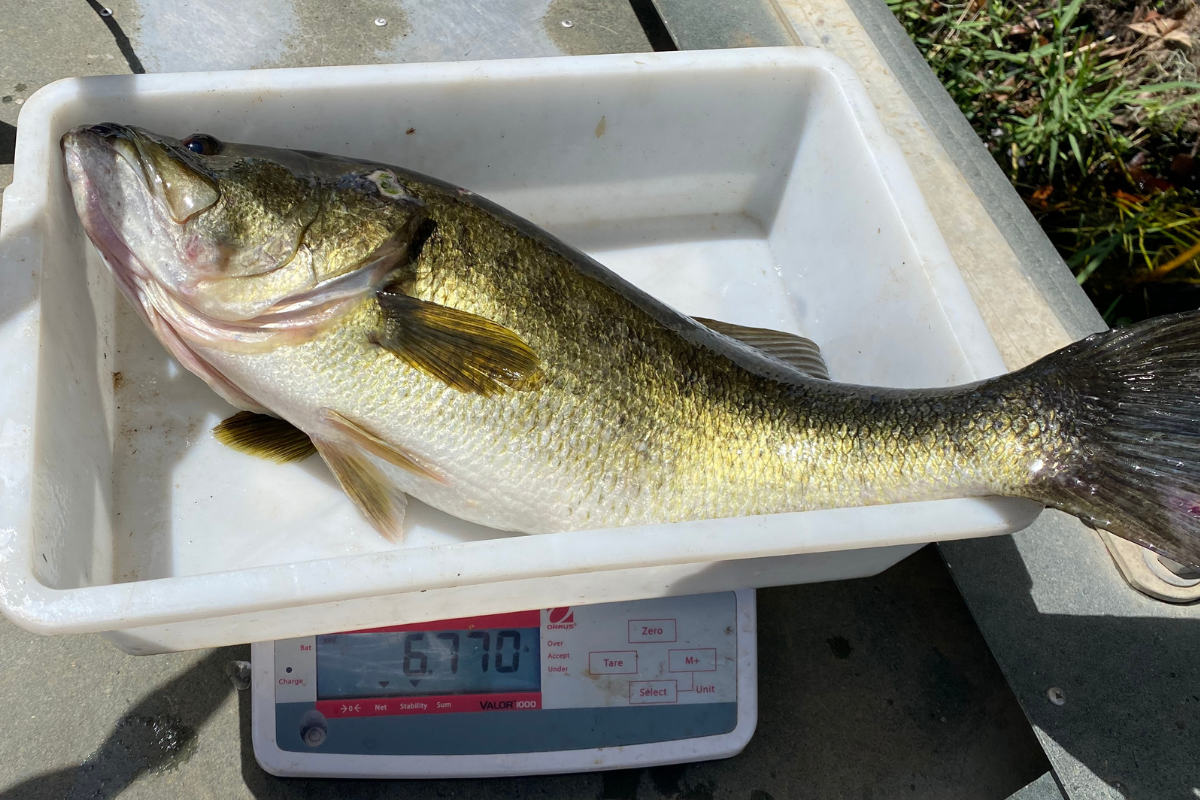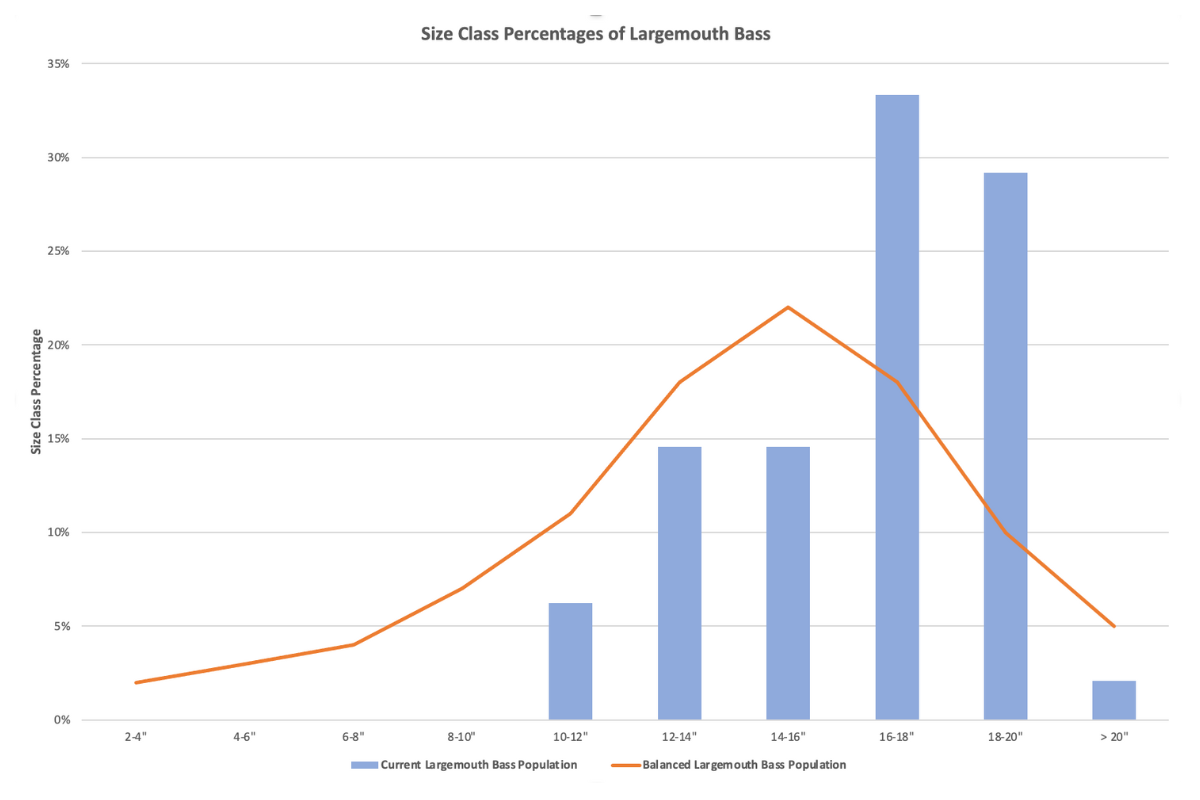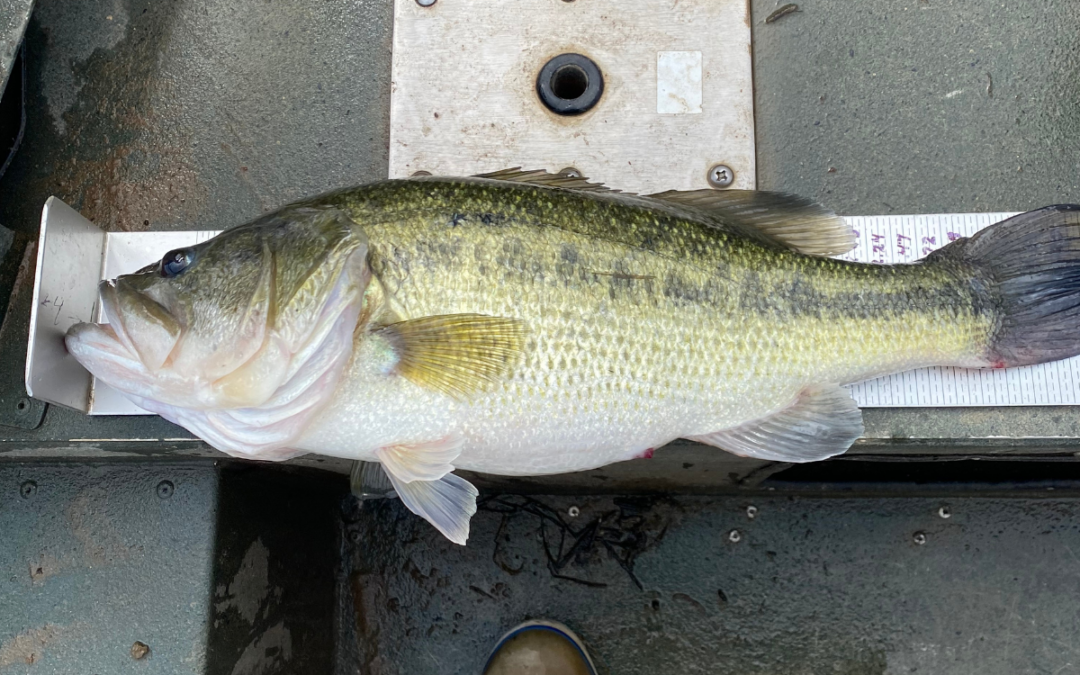When managing farm ponds or lakes, our primary goal is often times to produce a trophy largemouth bass fishery. This requires a multi-faceted approach which includes water quality, prey populations, pond structure, and ensuring we have a balanced bass population. We start with an electrofishing survey of the pond or lake, and then use that data to make a plan of action for a particular pond or lake.
With that data from that population survey, we look at the abundance of largemouth bass and prey fish caught during the survey. But more importantly, we want to analyze the size class distribution of the predator and prey fish. This tells us whether we have a balanced bass population and what type of management it will need going forward. In this blog, we’ll discuss what a balanced bass population looks like and how we can make adjustments to create balance.

What Is a Balanced Bass Population?
After weighing and measuring the fish from the survey and returning them to the pond, we divide the fish into specific size classes. This allows us to look at the distribution of different sizes of largemouth bass to see if the population is balanced or needs help. The size classes of interest are 10-12″, 12-14″, 14-16″, 16-18″, 18-20″, and fish longer than 20″.
A balanced largemouth bass population will have 55-60% of the individuals larger than 14″ in length. Again, these judgements are based on the data collected from our electrofishing survey. While fishing a pond might provide some indicators of population imbalance, a quality electrofishing survey will provide the best data for your pond.
We like to see around 40% of the bass in the 14-18″ range, and 15% of the fish in the 18″ and above range. This tells us that the smaller bass have adequate resources and are able to capture food. It tells us that they’re indeed growing and able to jump into the next size class from one year to the next.

Balanced Bass Population Data
The image above shows real data from a 11.4 acre pond that we surveyed within the last year. The orange line indicates what an ideal largemouth bass size class distribution should look like, and the blue bars show our results from the electrofishing survey.
We rarely collect data that follows the orange trend line perfectly, but this gives you an idea of what the data looks like. The electrofishing process isn’t perfect, but it provides the best representation of what’s actually happening in the pond. Some ponds are harder to survey than others due to structure and obstructions, and fish generally shock better on cooler days as opposed to hot ones.
The size class distribution of largemouth bass in this pond wasn’t in terrible shape, but it could use some help. We found no bass in the 10″ size class and too many individuals in the 16-20″ range. This likely means the larger bass were consuming all the smaller bass in the pond. The pond had a healthy population of larger bass, but this situation isn’t necessarily sustainable. We need survival of young bass to create a sustainable fishery.
For this pond, we recommended that the pond owner actively harvest fish in the 16-20″ range over the next year. This should help balance the population and increase the survival rate of the smaller bass. We often see ponds with bass populations in far worse shape than this one. This one wasn’t that bad, but keeping more fish in the 16-20″ range should make it even better!
Let Up Help Improve Your Pond!
If you’re in the south GA or north FL areas and need a population survey for your pond or lake, complete this form and we’ll contact you to schedule a time to meet. We look forward to turning your pond into a productive fishery for years to come!

